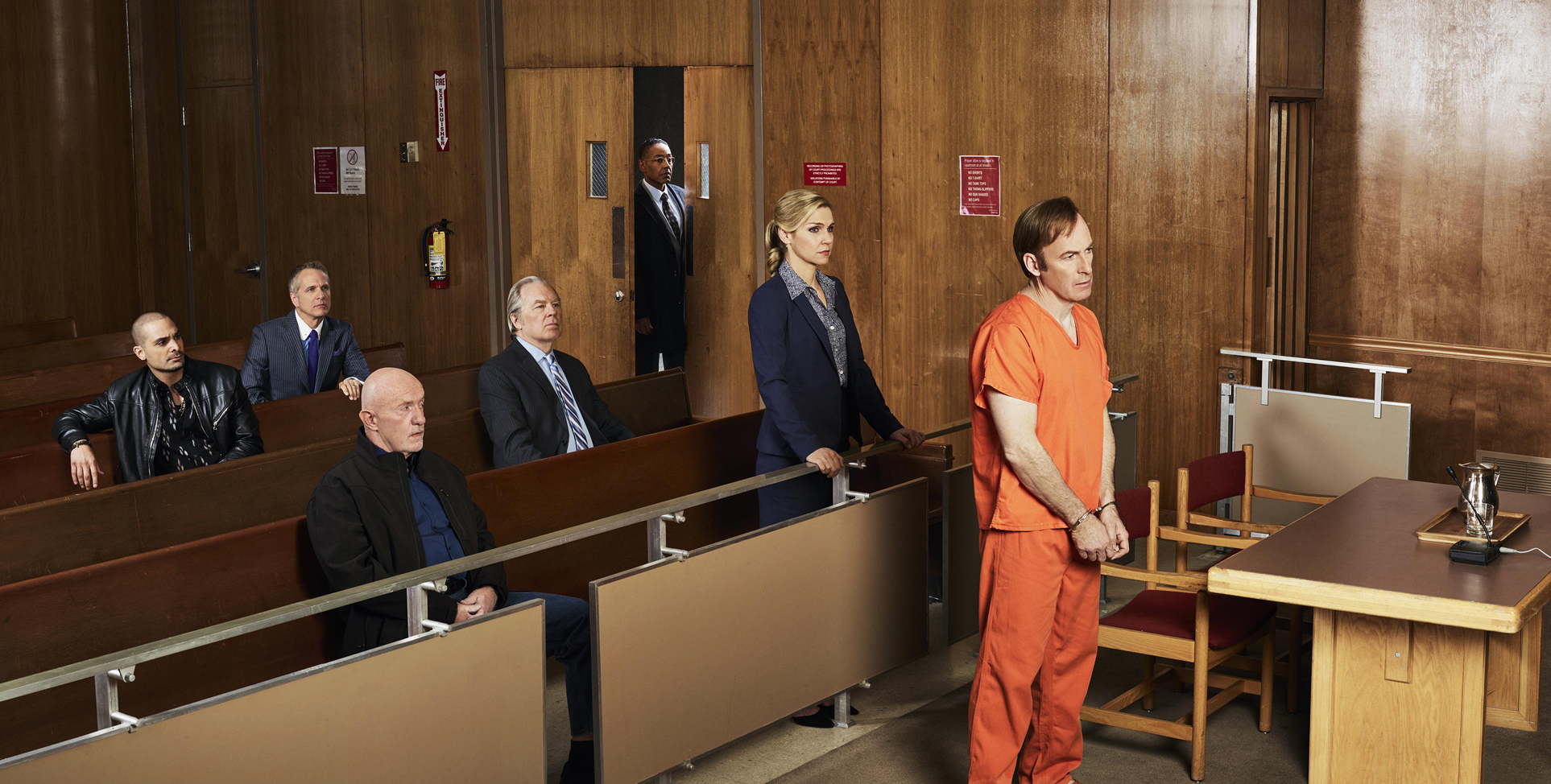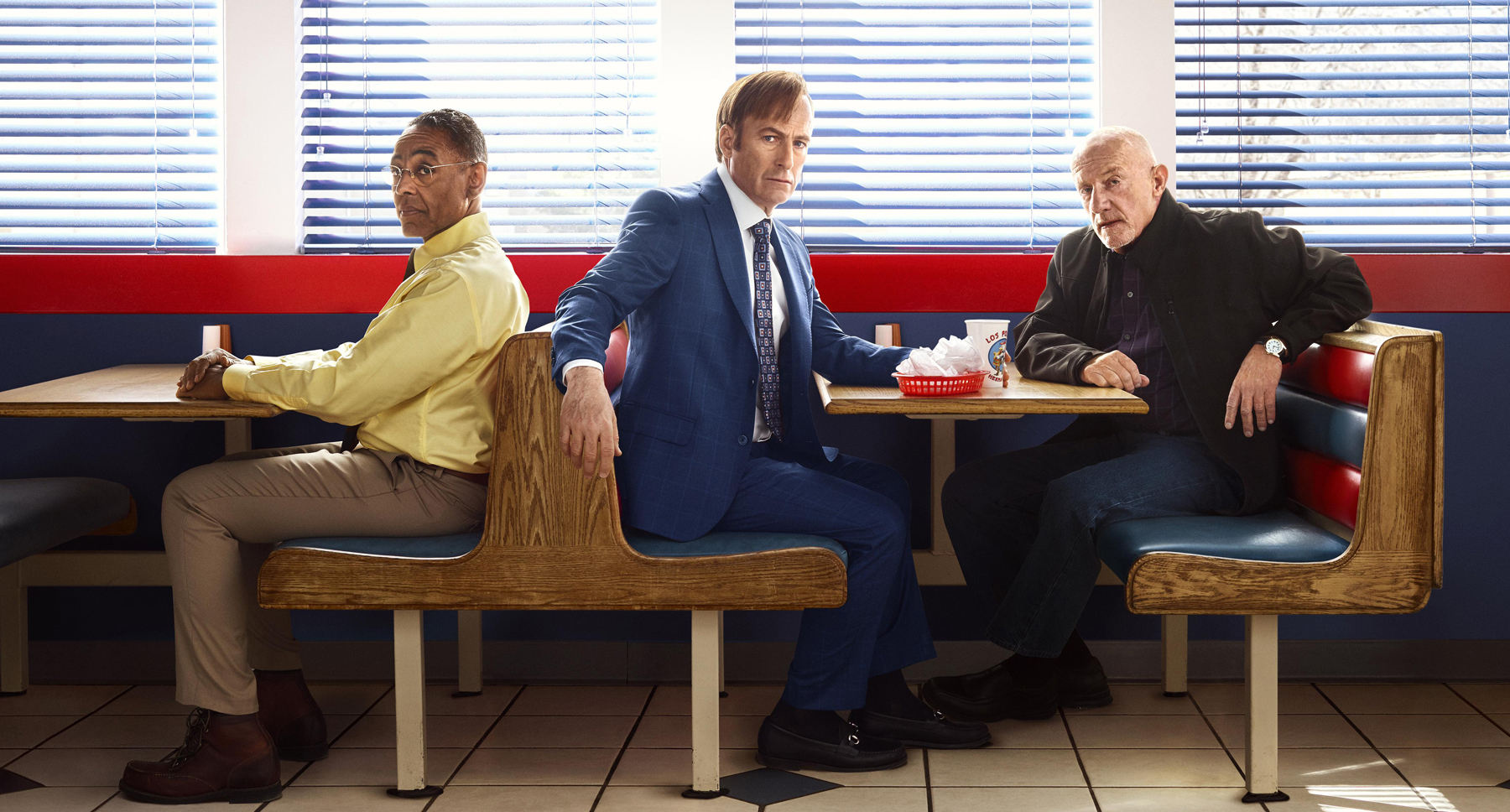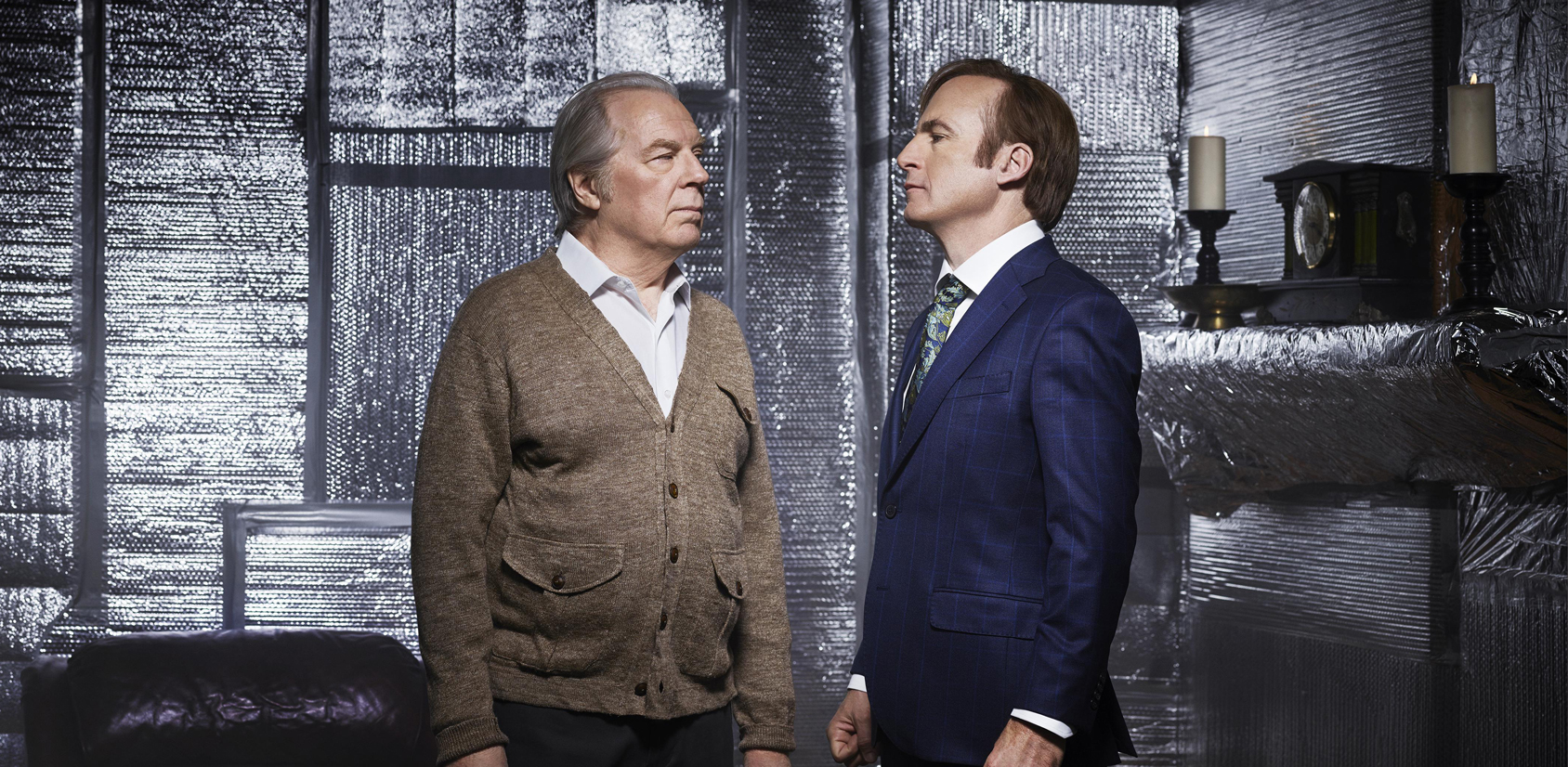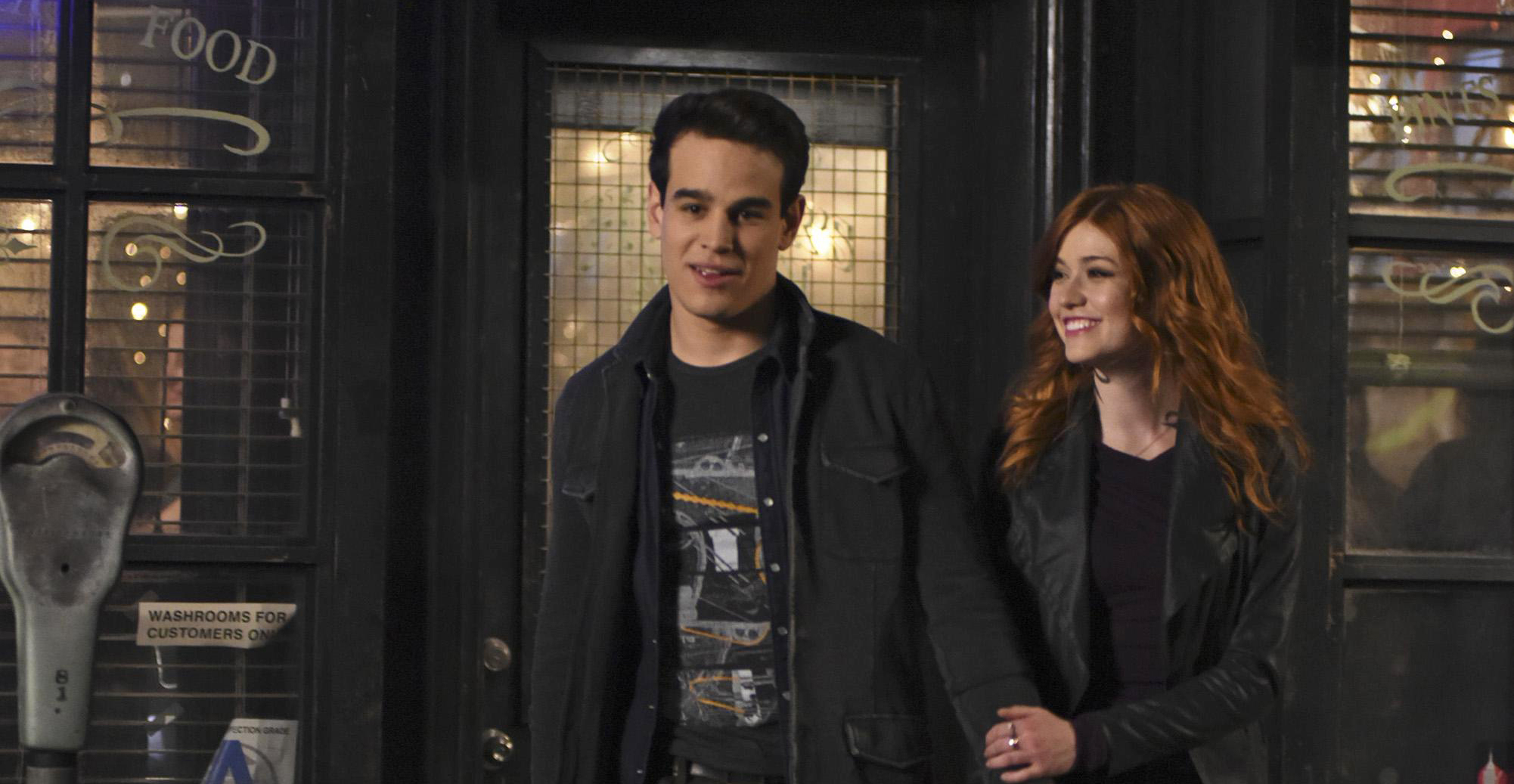Better Call Saul season 3 review: Jimmy moves closer to becoming Saul

Contains spoilers for Better Call Saul season 3 & the overall plot of Breaking Bad
Better Call Saul will always bear a resemblance to Breaking Bad. It’s unavoidable, of course, through its status as a prequel to a story that has already been told, but there’s more to the resemblance than just the default overlap between prequel and sequel. Bad wasn’t just about Walt, yet it was he who was predominantly ‘breaking bad’. Similarly, Saul – more so than Bad – is a sort of ensemble, with centric scenes focused not just on Jimmy, but familiarly on Mike, and less familiarly on Nacho. Yet, like Bad is effectively about Walt becoming Heisenberg, the narrative core of Saul is Jimmy becoming Saul. Neither character truly ceases to be their former selves completely, yet across the course of the series, they cross the point of no return. More accurately, they cross every point of no return, bit by bit.
However, while their arcs are roughly the same shape, Jimmy’s is narrower than Walt’s ever was. Where Walt goes from a cancer-stricken chemistry teacher to a bona-fide drug kingpin, Jimmy goes from being a morally questionable lawyer… to a morally questionable lawyer. You could add the word ‘very’ into the latter repetition, but Jimmy’s personality changes less than his surroundings and opportunities do; as we’ve seen through the development of Saul so far, his egocentrism isn’t a newly learnt trait. Indeed, it’s so profoundly him that he is confounded by the altruism of others, his father in particular.
Really, what Better Call Saul has done throughout is portray two sides of the same coin, a coin spinning through the air… Jimmy McGill. Saul Goodman. Jimmy McGill. Saul Goodman. Of course, by the time Bad swings around, the coin’s landed, but while it’s still in the air, the coin is Schrodinger’s Cat in another form, simultaneously heads and tails. Jimmy is both the Jimmy we see and the Saul we know he becomes. The coin keeps flipping back and forth between the two sides – however similar they might be, for neither is simply ‘good’ or ‘evil’ – but with season 3, the coin is getting much closer to landing on Saul. Kim’s crash wasn’t fatal, for her life or her career (though quite how it didn’t ostensibly impact the latter, given where she was headed at the time, is a pertinent question for later), but Jimmy instigated a crash of a different kind in Chuck, and for him it may well be fatal.
Vince Gilligan and co. aren’t the sort to pull a Walking Dead-style bait-and-switch with cliff-hangers, and it seems hard to imagine a logical scenario where Chuck escapes the fire alive, whether he wanted to or not. Even if Chuck somehow survives, that’s not a kind of survival that Jimmy can write off. Of course, he might try and absolve himself of blame as always, but with every situation of this kind, Jimmy gets closer to being irredeemable, and anyway, how many lines can one nearly cross, or cross over and cross back, before something’s changed overall? But perhaps this is getting ahead of where we are on Saul. The show is infamous for having a somewhat glacial pace, both in comparison to Bad and just generally (though given that quality of character work that’s no bad thing), and while season 3 did accelerate Jimmy away from the practicalities of his life before the show, and continue the shift in his personality, the reality is that we’re still a long way away from Bad. By the time we meet Saul in the Bad season 2 episode also titled ‘Better Call Saul’, he’s firmly ensconced in that life. What happens to Kim, Chuck, HMM, and everything that comprises Jimmy’s life in between then and now? There’s a huge journey left and the question really is how much of that journey will actually be shown on Saul, and how much will be left as a gap between the two shows?
But perhaps this is getting ahead of where we are on Saul. The show is infamous for having a somewhat glacial pace, both in comparison to Bad and just generally (though given that quality of character work that’s no bad thing), and while season 3 did accelerate Jimmy away from the practicalities of his life before the show, and continue the shift in his personality, the reality is that we’re still a long way away from Bad. By the time we meet Saul in the Bad season 2 episode also titled ‘Better Call Saul’, he’s firmly ensconced in that life. What happens to Kim, Chuck, HMM, and everything that comprises Jimmy’s life in between then and now? There’s a huge journey left and the question really is how much of that journey will actually be shown on Saul, and how much will be left as a gap between the two shows?
One part of his new life that did appear in season 3, however, was the name itself: Saul Goodman. “It’s just a name” Jimmy says when he and Kim watch the ‘Saul Goodman Productions’ advert at the end of ‘Off Brand’. To him, perhaps it is, for now, but to the audience, it’s a clear signal of his trajectory. The irony here, though, was how the name entered the show. Far from being an alter ego to allow Jimmy to continue his shady relationship with the law, ‘Saul Goodman’ was in season 3 Jimmy’s alter ego away from the law. With his law licence suspended from ‘Off Brand’ onwards following his hearing in ‘Chicanery’, Jimmy is left with a year’s worth of empty commercial slots, and an insistence that he’ll foot his half of the office bill with Kim.
His solution, eventually, is to film a ‘commercial for commercials’, advertising his services making ultra-low-fi adverts for local businesses. The origins of Saul Goodman, then, come not through an avoidance of the law, but through an adherence to absolute legal reality. But then think back to Bad, and that’s the character in a nutshell, the character who insists Walt and Jesse give him a dollar to make him their attorney, so he can legally represent them and keep their discussions confidential. Jimmy respects the existence of the law; he just tries to bend it to his will any way he can.
‘Saul Goodman Productions’ was also about showing Jimmy with the law stripped away. For some of the other characters on the show, the law is an inseparable part of them. For Kim, it was about fighting the good fight, even if that didn’t become the reality of her career; for Chuck, it was about ‘justice’, or at least about exercising his mental faculties; for Howard, it was about the family name and the longevity of the company, not unlike a tamer Tywin Lannister from Game of Thrones. For Jimmy, there’s a feeling that the law just happened to be the vehicle that, because of Chuck among other elements, was easiest for him to hijack in the circumstances.
Take the law away from any of the others, and they fundamentally change as people – just look at how Chuck fought for his relationship with it towards the end of the season. Take the law away from Jimmy, though, and he’s still ‘Slippin’ Jimmy’. That much was clear from the lengths he went to in ‘Slip’, to con the music shop owners out of something. They found out the poor value of Jimmy’s commercial production, he faked an injury by slipping over a drumstick to hold the thread of litigation over their heads. Except of course, that it’s Jimmy, and for the rest of the series, he really does have an injured back.
Jimmy’s the sort of guy who’ll gain a back injury staging a back injury for money… and show off the guitar he manages to obtain instead. He’s the sort of guy who can’t lose, who’ll conveniently but genuinely forget what victory was meant to be in the first place. Similarly, his attempts to manipulate the Sandpiper residents into accepting an early settlement fail, but in Jimmy’s eyes, his martyrdom in bringing Irene and her friends back together at the expense of his reputation amongst them becomes a moral victory. For the audience, or at least speaking for this one audience member, he’s increasingly hard to forgive. Through seasons 1 and 2, Mike has been the de facto secondary protagonist of Saul. Whether he was the second-most important character episode-by-episode was questionable, but he was the other primary connection to Bad, and he had his own narrative arc required to reach where we met him in the later show. The series had, until now, both been the story of how Jimmy became Saul, and of how ‘Mike, the ex-cop family man’ became ‘Mike, running security for a drug empire’. But with season 3, two things happened. Firstly, Mike objectively appeared a lot less across the season than I remember him doing across the first two, as other characters in Jimmy’s world seemed to appear more. But secondly, season 3 saw the introduction of an inarguably significant character from Bad: Huell. He was amusingly slimmer upon his return in ‘Chicanery’… no? Not Huell? Francesca? Seeing her enter the world of Saul, far happier than she ever was in Bad was mildly saddening… no? Not her either? Lydia, perhaps? Okay, okay: Gus. Finally, three seasons in, we saw the return of one half of the ‘Chicken Brothers’, Giancarlo Esposito’s Gus Fring.
Through seasons 1 and 2, Mike has been the de facto secondary protagonist of Saul. Whether he was the second-most important character episode-by-episode was questionable, but he was the other primary connection to Bad, and he had his own narrative arc required to reach where we met him in the later show. The series had, until now, both been the story of how Jimmy became Saul, and of how ‘Mike, the ex-cop family man’ became ‘Mike, running security for a drug empire’. But with season 3, two things happened. Firstly, Mike objectively appeared a lot less across the season than I remember him doing across the first two, as other characters in Jimmy’s world seemed to appear more. But secondly, season 3 saw the introduction of an inarguably significant character from Bad: Huell. He was amusingly slimmer upon his return in ‘Chicanery’… no? Not Huell? Francesca? Seeing her enter the world of Saul, far happier than she ever was in Bad was mildly saddening… no? Not her either? Lydia, perhaps? Okay, okay: Gus. Finally, three seasons in, we saw the return of one half of the ‘Chicken Brothers’, Giancarlo Esposito’s Gus Fring.
In fairness, compared to the expectation, Gus wasn’t as much of a presence in the season as expected; he was important, not least in the emasculation and slow diminishment of Hector Salamanca, but just not always visibly important. But what Gus’s introduction did was remove Mike’s narrative from just being Mike’s narrative, in terms of audience familiarity. There was overlap with Nacho before, sure, but for whatever reason, Nacho doesn’t make it to Bad, so he’s just a factor in Mike’s prequel, rather than the star of his own. But we know Gus, and we know Gus’ relationship to Mike, at least in its Bad form. In signing the employment documents to have Gus launder his money, in being listed as a ‘security consultant’ by Lydia, through Madrigal, Mike is now way further down his path than Jimmy is down his, and it’s a path he now shares with another character who is the star of his own prequel.
In fact, season 3 saw the diminishment of many constants that underpinned the first two seasons. Some, like Jimmy’s law licence being suspended, were part of that inexorable march towards Bad; the particulars are flexible, but the eventualities aren’t. Other parts of the show until now, though, exist only in Saul, and have no certainty. In particular, season 3 saw Chuck’s illness go from the bedrock of his reality, to almost making him question his reality. Electromagnetic hypersensitivity (EHS) is recognised as a claimed sensitivity, thus lacking the reassurance of a formal diagnosis. The best anyone can ever provide is something ranging between ‘yes, I see the ghosts too’ and ‘I believe you’. But claimed or not, formal diagnosis or not, his EHS is real to him.
The show has been persistent in showing that Chuck’s reality involves EHS. Yet season 3 sowed seeds of doubt in that reality, and, of course, it was down to Jimmy. Jimmy’s trick with the phone battery was just a ploy to undermine Chuck’s status as an irrefutable witness – as a star lawyer, name partner in a regional leader, and so committed to justice that he would even help to get his own brother disbarred. Of course, it worked, albeit at least partly because Chuck’s motives were certainly never as simple as ‘justice’, but it worked too well. Chuck’s meltdown in ‘Chicanery’ was exactly what Jimmy was looking for, but it was an extended killer blow for Chuck. The notion of belief was something I had written about in a political opinion blog last week, incidentally, but the crux of that argument is relevant here too.
From a distance, the idea of revealing ‘the truth’ to someone seems a matter of enlightenment, of providing the facts and allowing the subject to just ‘realign’ themselves accordingly. We have always been at war with Eastasia, and so forth. But in reality, to accept the new ‘truth’ means denying the old. If that previous truth is marginal, irrelevant, perhaps there’ll be little effect, but with ‘big’ truths, to adjust means to question one’s entire notion of reality. To paraphrase Yeats, things fall apart; the centre cannot hold; mere anarchy is loosed upon the mind. And for Chuck, EHS wasn’t just a ‘big’ truth, it was the truth. As mentioned earlier, Chuck is one of those on the show who lives for the law. Yet EHS restricted his relationship with the law, his ex-wife, and the world at large. To reveal this as potentially all being in his head isn’t comforting; it’s terrifying. In the latter half of the season, following the ‘Chicanery’ incident, we see Chuck trying to come to terms with being ‘free’ of EHS – he switches the lights back on, he starts cooking, he goes to the supermarket, even managing to make it through the heavily-electrified frozen aisle. He adjusts, or at least seems to. But then reality takes hold. It’s not as simple as returning to his old life before EHS, and soon that mere anarchy of Yeats begins to assert itself, peaking in the fantastic seven-minute-long shot of Chuck slowly tearing his house, and his life, apart, searching for the remaining source of electricity that’s causing the meter to keep spinning. In the end, he smashes the meter, thereby reinforcing that he chooses his reality – EHS – over the objectivity and formality of the outside world. And that leads, eventually, to what seems to be his death.
As mentioned earlier, Chuck is one of those on the show who lives for the law. Yet EHS restricted his relationship with the law, his ex-wife, and the world at large. To reveal this as potentially all being in his head isn’t comforting; it’s terrifying. In the latter half of the season, following the ‘Chicanery’ incident, we see Chuck trying to come to terms with being ‘free’ of EHS – he switches the lights back on, he starts cooking, he goes to the supermarket, even managing to make it through the heavily-electrified frozen aisle. He adjusts, or at least seems to. But then reality takes hold. It’s not as simple as returning to his old life before EHS, and soon that mere anarchy of Yeats begins to assert itself, peaking in the fantastic seven-minute-long shot of Chuck slowly tearing his house, and his life, apart, searching for the remaining source of electricity that’s causing the meter to keep spinning. In the end, he smashes the meter, thereby reinforcing that he chooses his reality – EHS – over the objectivity and formality of the outside world. And that leads, eventually, to what seems to be his death.
For Kim, season 3 seemed like one extended punchline for a joke that everyone knows but her. Not because her arc for the season is funny, but because we’ve seen the damage Jimmy can cause her already; closer ties – personally, professionally, financially – were just that punchline on a larger scale. Until the crash, there was a veil of normality to her across the season. Her work with Masa Verde seemed fruitful, she seemed to have a solution for her new client, and she managed to successfully argue Jimmy’s sentence down from disbarment to suspension.
Yet that veil was typical of the intricacies of Saul and Bad, because it was the veil, rather than what is was hiding, that did the damage. Kim needed sleep, and was overextended as a lawyer, but both issues were manageable… if she had accepted them. If she had passed on the new client to someone else as planned, or made sure she played timings by her rules. Instead, by pretending everything was normal, she tricked herself, and tricked the audience, until everything made sense with the crash. Those sort of moments are the best kind of shocks for TV, the ones where the moment itself is visually, viscerally shocking, yet in hindsight was always, obviously, going to happen.
In a way, Kim’s crash seemed a lucky-escape version of Donald Margolis’ breakdown in the Bad season 2 finale ‘ABQ’. He seems fine when he returns to work at air traffic control, six weeks following Jane’s death. We assume he’s fine. But then his mind wanders, and he inadvertently causes the plane crash, and of course he isn’t fine. As is mentioned to Kim in ‘Lantern’, the road she was on is usually crowded; on any other day, her actions would have impacted others. The difference between her and Donald was nothing more than circumstance, just as with Jimmy and the law. Indeed, Kim’s crash had been foreshadowed earlier on, as she narrowly avoided having her crash into a wall in the middle of nowhere following her meeting with a client. By the law of escalation, is her actual crash foreshadowing too? Given she survives the crash, that too is a near miss of sorts, so one wonders what’s to come for her.
It goes without saying that this was a superb season of Saul, which is itself a superb show. But it’s only through unpacking each element in this way that one can truly appreciate the depth of character development that goes on here. Where most prequels operate with the cynicism of knowing the ending, Saul, like Bad, operates with the freedom of being able to enjoy the journey from A to B. We know where Saul is going. What we see is the painstaking way he got there.
★★★★★
SaveSave
SaveSave


